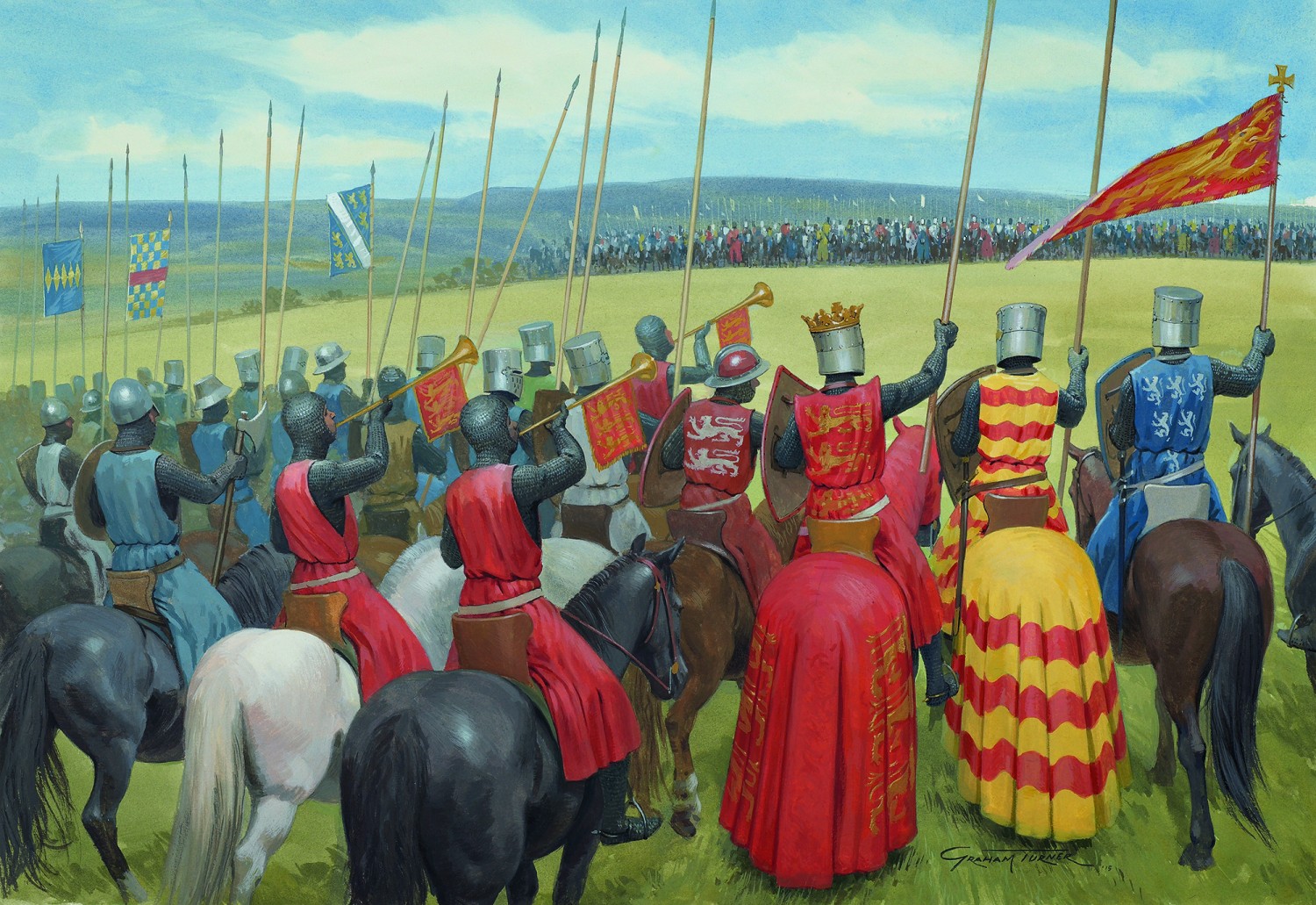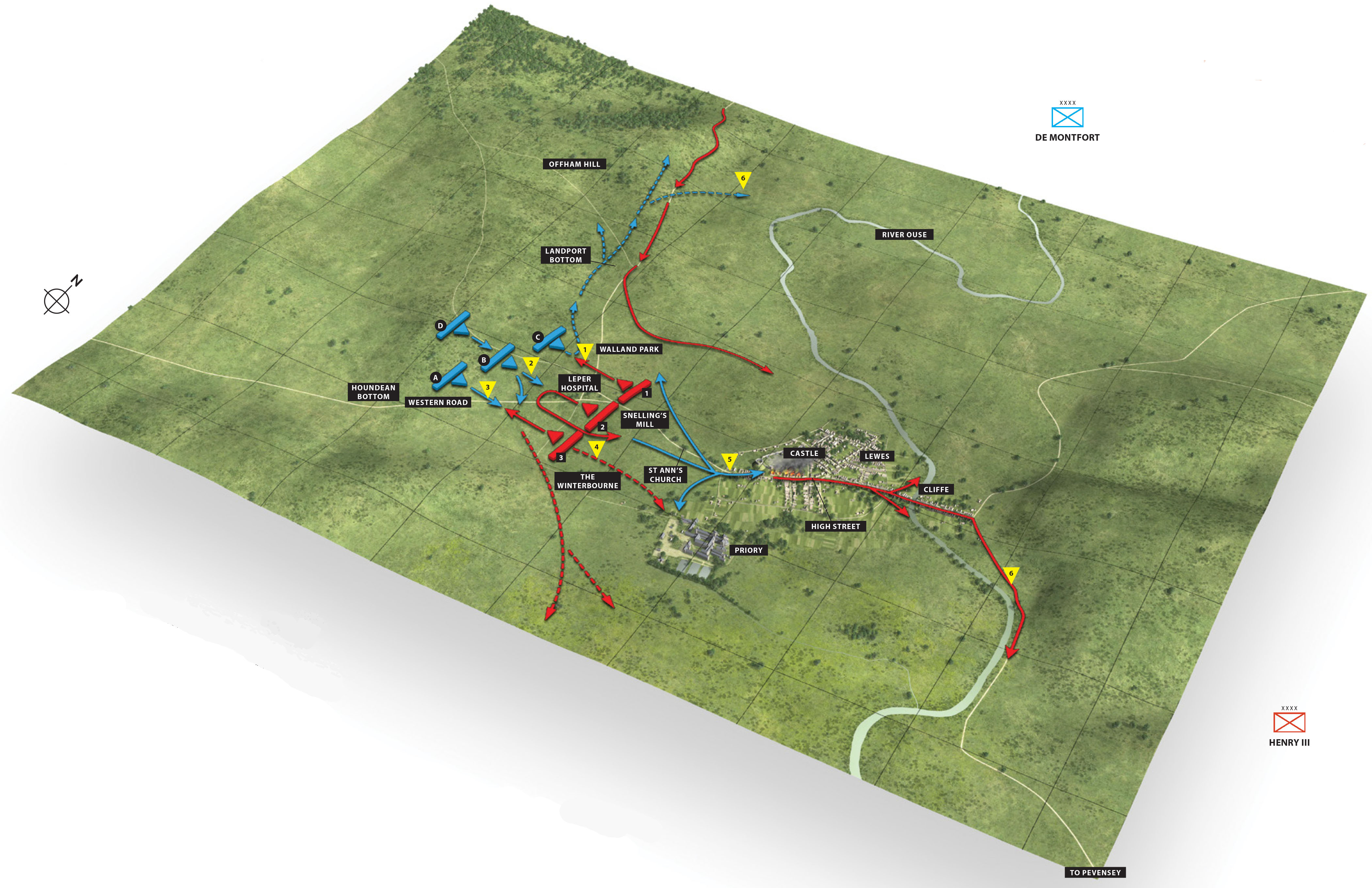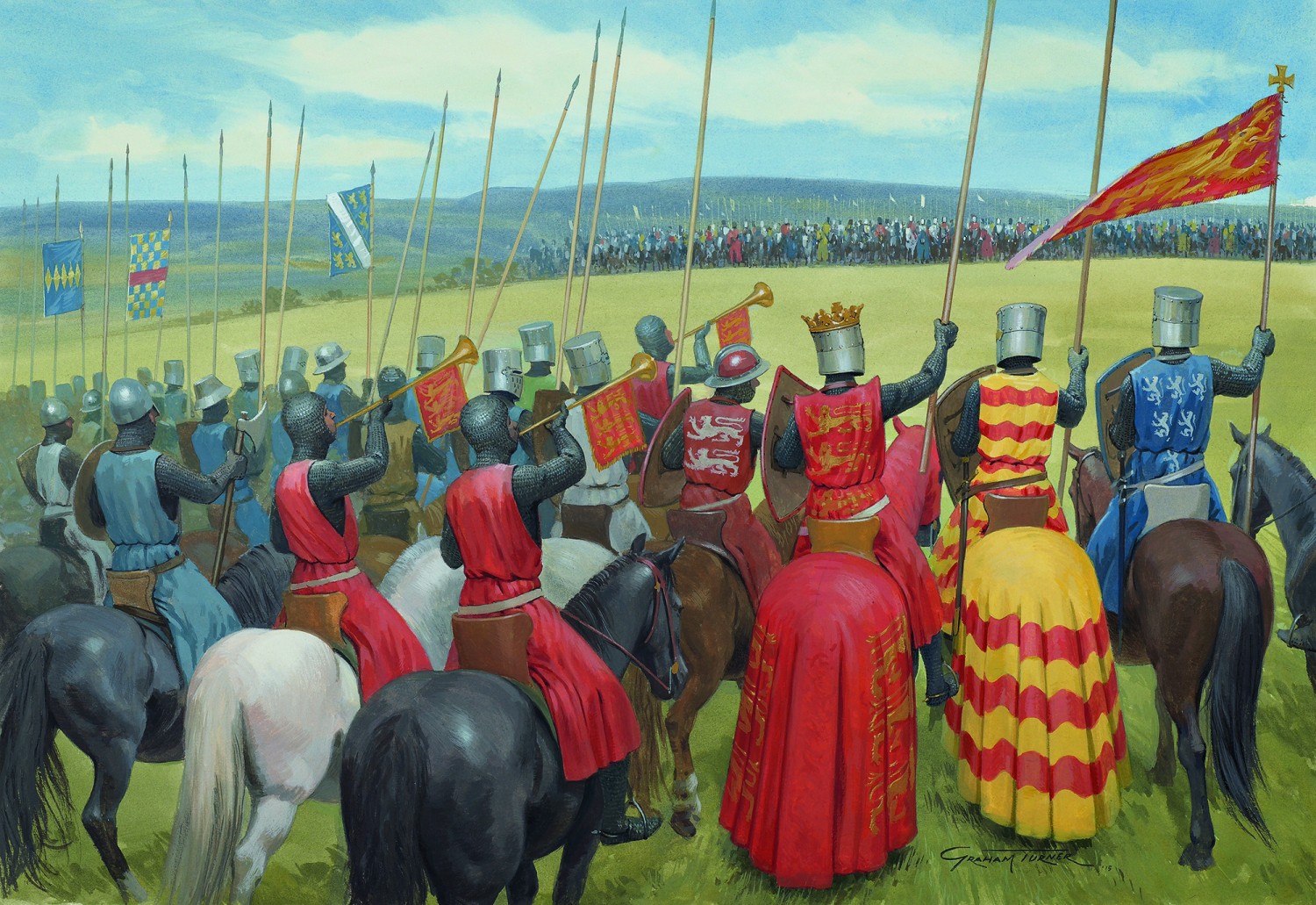
On This Day: A King Is Vanquished At Lewes

It may not have been as bloody or politically significant as the Battle of Hastings, but the Battle of Lewes in 1264 certainly shared one thing in common with its1066 predecessor: The English king lost.
The king in question was Henry III and his reign was otherwise somewhat peaceful.
But between 1264 and 1267 this peace would be broken by a conflict known as the Second Barons' War.
It was characterised by a rebellion of sorts which saw England’s major nobles, disillusioned by Henry III’s questionable methods of ruling and stretched too thin by his demands for money to fund a papal crusade, take action against what they saw as a divinely appointed authority.
The Challenger
The leader of the Baron’s side was Simon De Montfort, the Earl of Leicester- a man so much ahead of his time that he might today be labelled a democrat because he believed that England’s noblemen should have a say in the running of the country.
The Incumbent
Although Henry III’s reign was a long and mostly peaceful one, it was also one of the least effective in medieval history. Henry was forever seeking money for causes which benefitted nobody but himself- a move guaranteed to get the nobles’ backs up.
The Provisions
In a manoeuvre designed to create a compromise between the aggrieved barons and the King, Henry reluctantly agreed to a program of reform which would provide the Barons with more influence in the ruling of the country in the form of advisory councils and committees.
Of course, Henry found every way he could to avoid sticking to the provisions, and in an environment of increasing hostility, war inevitably broke out.

The Battle
On the morning of May 14, 1264, the Royalist army were encamped around Lewes Priory with the king, whilst his son, Prince Edward (later Edward I), occupied Lewes Castle along with the heavy cavalry.
From the offset, the royalist side were at an advantage. De Montfort's side may have held the high ground at Offham Hill, but many of his troops were inexperienced fighters brought in for London - little more than peasants - and they were outnumbered 2:1 by Royalist forces.
Thus, initially, Royalist forces had some success. Hearing of Montfort’s positioning, Prince Edward mobilised his troops and rode out to meet the opposition, without waiting for his father Henry to join them. Backed by heavy cavalry, he forced Montfort’s troops into a retreat.
A contemporary, the monk William Rishanger, described Edward and his men as “thirsting like a Stag for a spring of water for the blood of his enemies”.
Edward decided to pursue the apparently routed left flank of de Montfort's army, which left Henry alone - something that would prove to be a pivotal element of the battle.

Richard Brooks describes what happened next in 'Lewes and Evesham 1264-65' when Henry's forces began their advance:
"A charge started at a walk, lances held upright, until the command 'Poignez!' - 'Spur on!' when speed increased to a trot. Couched beneath the right arm, each lance concentrated the energy of horse and rider in a single blow. Only at the last moment would the pace approach a gallop. As the lines crashed together, fragments of broken lances and shields flew about, the ensuing din of maces and swords upon helmets resembling a thousand blacksmiths beating their anvils."
De Montfort’s troops eventually took advantage of their uphill position, pushing Henry and his forces back towards the Priory.
Chaos in the Royalist ranks ensued, and in the melee King Henry was captured.
But despite the king’s predicament, the castle refused to surrender.
Returning to the battlefield, Edward found the battle already won - and was rewarded for his valour by being taken prisoner as well.
After the battle, Edward and his farther Henry remained imprisoned as hostages for over a year
After spending a night in the priory with his son and his followers as captives, Henry agreed on May 15 to discuss terms with Simon de Montfort, in a move which cemented his name as one of the most powerful nobles of the period.
The Outcome
The battle of Lewes had some complex consequences; England effectively had two rulers - whilst Henry was still technically King, de Montfort, along with other powerful nobles, now headed a committee of barons who held ultimate control over the crown.
For now, as Winston Churchill wrote in his History of the English-Speaking Peoples:
"Simon de Montfort was in every respect master of England."
But the country’s fate would not really be decided for another year, until the battle of Evesham.
(Click left for part two of this story.)
For more, read 'Lewes and Evesham' by Richard Brooks and visit Osprey Publishing for more military history.







